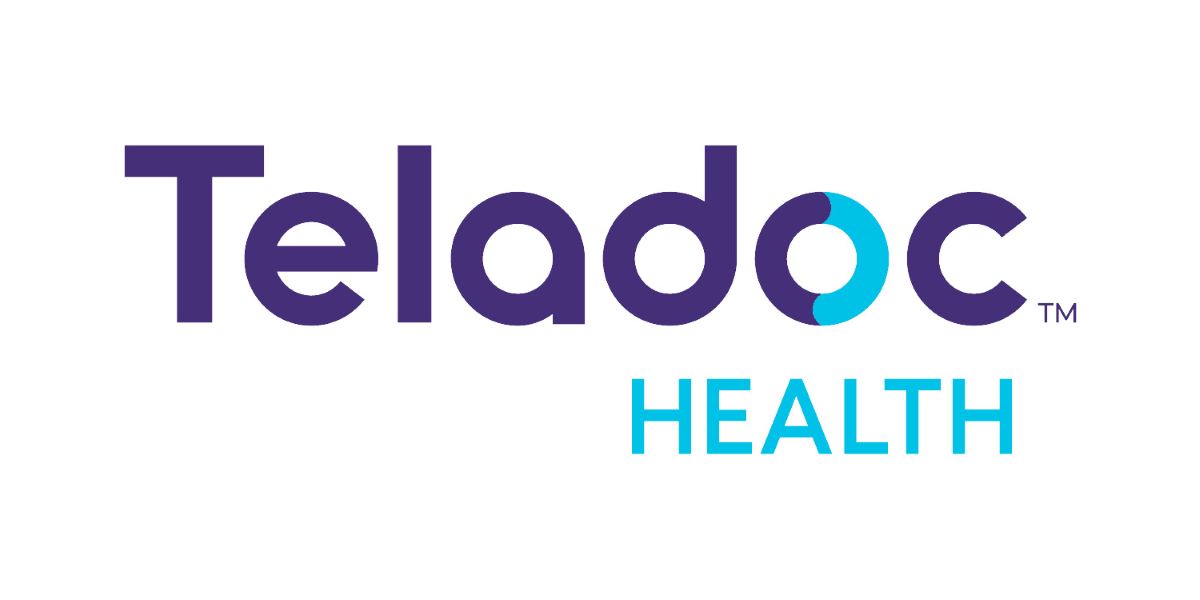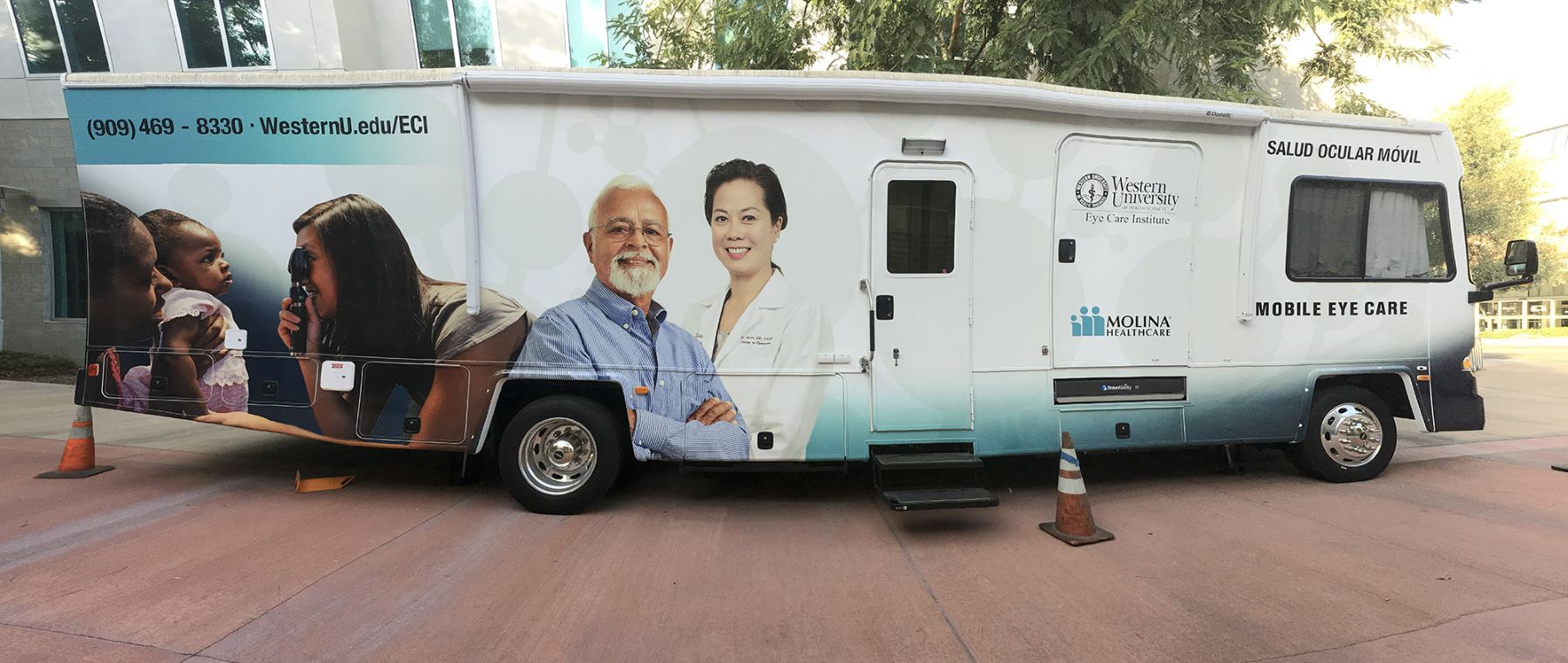Home>Finance>What To Do When Your Doctor Doesn’t Accept Your Insurance


Finance
What To Do When Your Doctor Doesn’t Accept Your Insurance
Published: November 15, 2023
Discover effective strategies to handle the financial burden when your doctor refuses to accept your insurance. Protect your finances with expert tips in this comprehensive guide.
(Many of the links in this article redirect to a specific reviewed product. Your purchase of these products through affiliate links helps to generate commission for LiveWell, at no extra cost. Learn more)
Table of Contents
- Introduction
- Understanding Insurance Networks
- Reasons Why Doctors May Not Accept Your Insurance
- Steps to Take When Your Doctor Doesn’t Accept Your Insurance
- Contact Your Insurance Provider
- Inquire About Out-of-Network Benefits
- Check for Exceptions or Special Circumstances
- Get a Referral or Authorization
- Explore Other Doctors Within Your Network
- Consider Negotiating Rates
- Explore Options for Out-of-Network Coverage
- Research Patient Assistance Programs
- Seek Second Opinions
- Evaluate Insurance Options During Open Enrollment
- Conclusion
Introduction
Dealing with health insurance can be a complex and frustrating process, especially when your doctor doesn’t accept your insurance. This situation can leave you feeling stuck and unsure of what steps to take next. However, understanding why doctors may not accept your insurance and knowing what actions you can take can help you navigate this challenging situation.
Before diving into solutions, it’s important to understand how insurance networks work. Insurance companies negotiate contracts with healthcare providers to create a network of doctors, hospitals, and other medical professionals. When a doctor is part of your insurance network, they have agreed to accept the insurance company’s payment rates for covered services, which can result in lower out-of-pocket costs for you.
However, there are several reasons why a doctor may choose not to accept certain insurance plans. One common reason is that the doctor may have reached their patient limit for a particular insurance network or have decided to go out of network entirely. Additionally, some insurance plans may not reimburse doctors adequately, leading them to opt out of accepting those plans.
When faced with a situation where your doctor doesn’t accept your insurance, it’s essential to take action to ensure you still receive the medical care you need without incurring excessive out-of-pocket expenses. In this article, we will explore a series of steps you can take to navigate this situation and find a solution that works for you.
Understanding Insurance Networks
Insurance networks play a crucial role in determining which healthcare providers you can visit and how much you’ll pay for your medical services. An insurance network is a group of doctors, hospitals, specialists, and other healthcare providers who have contracts with a specific insurance company. These contracts outline the reimbursement rates and terms for services provided to the insurance company’s members.
When you have health insurance, your plan will typically have a network of providers that are considered “in-network.” In-network providers have agreed to accept the negotiated rates set by the insurance company for covered services. This means that when you visit an in-network doctor or hospital, you can expect to pay lower out-of-pocket costs as the insurance company will cover a significant portion of the bill.
On the other hand, “out-of-network” providers do not have a contract with your insurance company. This means that they have not agreed to accept the insurance company’s negotiated rates and may charge higher fees for their services. Visiting an out-of-network provider can result in higher out-of-pocket costs or limited coverage, depending on your insurance plan.
It’s important to note that different insurance plans have different networks, and not all doctors are part of every network. Therefore, it’s crucial to review your insurance plan documents or contact your insurance provider to determine which doctors are considered in-network.
If a doctor doesn’t accept your insurance, it typically means they are not part of your insurance network. This can happen for various reasons, such as:
- The doctor has chosen not to contract with your insurance company
- The doctor has reached their patient limit for the insurance network
- Your insurance plan may not offer coverage for certain specialties or services that the doctor provides
Understanding the intricacies of insurance networks can help you navigate the healthcare system more effectively, ensuring you make informed decisions about which providers to choose and how to manage your healthcare costs.
Reasons Why Doctors May Not Accept Your Insurance
There are several reasons why doctors may choose not to accept certain insurance plans. While it can be frustrating, understanding these reasons can provide insight into why your doctor doesn’t accept your insurance and help you explore alternative solutions. Here are some common reasons:
- Insufficient reimbursement rates: Insurance companies negotiate reimbursement rates with healthcare providers, which are the amounts they will pay for covered services. Some doctors may decline certain insurance plans if they feel the reimbursement rates are too low and not financially viable for their practice.
- Administrative burden: Dealing with insurance claims and paperwork can be time-consuming and administratively burdensome for healthcare providers. Some doctors may not accept certain insurance plans to simplify their practice operations and reduce administrative tasks.
- Network limitations: Doctors may choose to limit their participation in insurance networks due to a variety of factors, including the number of patients they can reasonably handle, their area of specialization, or simply personal preference.
- New practices or restrictions: Newly established doctors or clinics may take time to join insurance networks as they build their patient base or establish their practice. Additionally, some doctors may choose to limit their participation to a select number of insurance plans based on their own criteria.
- Changes in insurance contracts: Insurance companies can make changes to their contracts or reimbursement policies, which may incentivize doctors to opt-out of accepting certain insurance plans to protect their financial interests.
- Geographical and demographic factors: Location and demographics can also influence doctors’ decisions to accept certain insurance plans. For example, doctors in rural areas may have limited options for insurance networks, while others may prefer to cater to a specific patient population.
It’s important to remember that doctors have the freedom to choose which insurance plans they will accept, and these decisions are often based on factors specific to their practice and professional goals. While it can be frustrating if your preferred doctor doesn’t accept your insurance, there are steps you can take to navigate this situation and access the care you need.
Steps to Take When Your Doctor Doesn’t Accept Your Insurance
Discovering that your doctor doesn’t accept your insurance can be concerning, but it doesn’t mean you’re out of options. Here are several steps you can take to navigate this situation and find a solution:
- Contact Your Insurance Provider: Reach out to your insurance provider to confirm that your doctor is not in-network. They can provide you with a list of in-network doctors in your area and answer any questions you may have about your coverage.
- Inquire About Out-of-Network Benefits: Some insurance plans offer out-of-network benefits, which can provide partial coverage for services received from a doctor outside of the network. Find out what percentage of the fees will be covered, and determine if this is a viable option for you.
- Check for Exceptions or Special Circumstances: In certain situations, your insurance company may make exceptions to allow you to see a specific doctor. For example, if the doctor is the only specialist in your area or if they have a unique expertise for your medical condition. Check with your insurance provider to see if they can make an exception for you.
- Get a Referral or Authorization: In some cases, your insurance company may require a referral or authorization to see an out-of-network doctor. Talk to your primary care physician about your situation and see if they can provide a referral or help you obtain the necessary authorization.
- Explore Other Doctors Within Your Network: If your doctor is not an option, consider exploring other doctors within your insurance network. Your insurance provider can provide a list of in-network doctors who specialize in the same field or offer similar services.
- Consider Negotiating Rates: If you are set on seeing a specific doctor, you can try negotiating the cost of services directly with the doctor’s office. Some doctors may be open to adjusting their fees or setting up a payment plan to accommodate your situation.
- Explore Options for Out-of-Network Coverage: If there are no suitable in-network alternatives, you can discuss the possibility of receiving out-of-network coverage with your insurance provider. They may have options to extend coverage or provide reimbursement for out-of-network services, although it may involve higher out-of-pocket costs.
- Research Patient Assistance Programs: Some doctors or medical facilities offer patient assistance programs that can help reduce the financial burden of medical expenses. Research if there are any programs available that can provide financial assistance or discounts.
- Seek Second Opinions: If finding an in-network doctor is challenging, or you have a complex medical condition, seeking a second opinion can be valuable. Another doctor may have different insurance network preferences or treatment options that align better with your needs.
- Evaluate Insurance Options During Open Enrollment: If you consistently encounter difficulties with finding doctors who accept your insurance, consider evaluating different insurance plans during the open enrollment period. Look for plans that have a wider network or better coverage options for your specific medical needs.
By taking these steps and exploring alternatives, you can ensure that you still receive the necessary medical care while minimizing your out-of-pocket costs when your doctor doesn’t accept your insurance.
Contact Your Insurance Provider
When you discover that your doctor doesn’t accept your insurance, the first step you should take is to contact your insurance provider. Reach out to their customer service department or check their website for information on in-network doctors in your area. Communicating with your insurance provider is crucial as they can provide guidance and support throughout the process.
When contacting your insurance provider, consider the following:
- Confirming In-Network Status: Verify whether your current doctor is indeed out-of-network. Sometimes, there may be errors or changes in the network listings, so it’s essential to obtain accurate information.
- Exploring In-Network Alternatives: Ask for a list of in-network doctors or specialists who can provide the services you need. Inquire about their qualifications, locations, and availability to ensure they meet your requirements.
- Understanding Coverage Details: Inquire about the coverage details for in-network and out-of-network services. Understanding the financial implications and potential out-of-pocket costs associated with each option will help you make informed decisions.
- Getting Authorization: If your insurance plan requires authorization for out-of-network care or referrals from your primary care physician, seek clarity on the process. Your insurance provider can guide you on the necessary steps to secure the required authorization or referrals.
- Asking Questions: Don’t hesitate to ask any questions or voice concerns regarding your coverage. This includes understanding any exclusions, limitations, or restrictions that may impact your ability to receive care from specific doctors.
Being proactive and reaching out to your insurance provider will provide clarity on your options and empower you to make informed decisions regarding your healthcare. Remember to take notes during your conversation for future reference, and keep any communication records for your records.
Inquire About Out-of-Network Benefits
In situations where your doctor doesn’t accept your insurance, it’s worth exploring if your insurance plan offers any out-of-network benefits. Out-of-network benefits can provide partial coverage for services received from doctors outside of your insurance network, helping to offset some of the costs.
To inquire about out-of-network benefits, follow these steps:
- Contact Your Insurance Provider: Reach out to your insurance provider’s customer service to inquire about the out-of-network benefits provided by your specific plan. Ask about the percentage of fees covered, any deductible requirements, and any limitations on the coverage.
- Understand the Reimbursement Process: Gain clarity on how the reimbursement process works for out-of-network services. This includes finding out if you need to pay the provider in full upfront and submit a claim for reimbursement or if the provider can bill the insurance company directly.
- Calculate Potential Costs: Once you have the information about out-of-network benefits, calculate the potential costs you may incur. Consider the coverage percentage, any deductibles, and any coinsurance or copayment requirements. This will help you weigh the financial implications of using out-of-network services.
- Weigh the Pros and Cons: Evaluate the benefits of seeing your preferred doctor even if they are out-of-network against the potential higher costs you may have to bear. Consider the doctor’s expertise, the quality of care you expect to receive, and the convenience of location.
- Research Out-of-Network Provider Rates: If you decide to pursue out-of-network care, research the rates charged by the doctor or specialist you wish to see. Knowing their fees can help you gauge the potential portion you’ll be responsible for paying.
Keep in mind that while out-of-network benefits can provide some coverage, they often have limitations and may not cover the full cost of the services. It’s important to compare the potential out-of-pocket expenses with the benefits of seeing an out-of-network provider to determine if it’s a viable option for you.
Remember to keep a record of any conversations, including the names of representatives you spoke with and the information they provided. This documentation can be valuable if you need to refer back to it or address any discrepancies in coverage.
Check for Exceptions or Special Circumstances
In some cases, there may be exceptions or special circumstances where your insurance provider can make accommodations for you to see a doctor who doesn’t typically accept your insurance. It’s worthwhile to inquire about these possibilities to explore all options available to you.
Here are steps to check for exceptions or special circumstances:
- Reach Out to Your Insurance Provider: Contact your insurance provider’s customer service to discuss your situation and ask if any exceptions can be made for you to see a specific doctor. Explain the reasons why you prefer that doctor and see if they can provide any guidance or make arrangements.
- Highlight Unique Expertise or Services: If the doctor you wish to see has a unique expertise or provides specialized services that are not readily available within your insurance network, emphasize this to your insurance provider. They may be more likely to make an exception if it’s for specialized care that is essential to your medical needs.
- Investigate Coverage for Unique Medical Conditions: If you have a rare or complex medical condition and there are limited doctors within your insurance network who specialize in treating your condition, inquire about coverage options. Your insurance provider might have provisions in place to ensure access to the necessary care, even if it means seeing an out-of-network specialist.
- Consider Geographic Limitations: If you reside in a remote area or have limited access to in-network providers, explain the geographic limitations to your insurance provider. They may have alternative arrangements or coverage options to ensure you receive necessary care without excessive travel or inconvenience.
- Seek Advocacy from Your Primary Care Physician: Your primary care physician can play a vital role in advocating for you and making referrals or authorizations to see a specific doctor. Discuss your concerns and preferences with your primary care physician, and ask if they can help facilitate this process by communicating with your insurance provider on your behalf.
Each insurance provider can have different policies and processes when it comes to exceptions or special circumstances. It’s essential to have open and honest communication with your insurance provider to explore all possibilities. Remember to document your conversations and any agreements made for future reference.
While exceptions may not always be possible, it’s worth checking with your insurance provider as they may have options available to accommodate your needs, allowing you to see the doctor you prefer.
Get a Referral or Authorization
In some cases, your insurance company may require a referral or authorization to see an out-of-network doctor. Obtaining a referral or authorization from your primary care physician can help streamline the process and increase your chances of receiving coverage for the services you need.
Follow these steps to get a referral or authorization:
- Consult with Your Primary Care Physician: Schedule an appointment with your primary care physician to discuss your situation. Explain why you wish to see a specific out-of-network doctor and provide any relevant medical information that supports your need for their expertise.
- Request a Referral: Express your desire to see the out-of-network doctor to your primary care physician and ask for a referral. A referral serves as a recommendation from your primary care physician to the specialist you wish to see.
- Discuss Medical Necessity: Ensure that your primary care physician understands the medical necessity of seeing the specific doctor and that their referral reflects this need. Providing any relevant medical records, test results, or previous treatment history can strengthen your case.
- Contact Your Insurance Provider: Once you have the referral from your primary care physician, contact your insurance provider to inquire about their authorization process. Understand the requirements and steps you need to take to obtain authorization.
- Submit the Required Documentation: Gather any necessary documentation requested by your insurance provider, such as the referral form from your primary care physician, medical records, or any other supporting documents. Make sure to submit these documents promptly to avoid any delays in the authorization process.
- Follow Up with Your Insurance Provider: After submitting the required documentation, follow up with your insurance provider to ensure they have received it and to inquire about the authorization status. Stay proactive and persistent in your communication to move the process forward.
Obtaining a referral or authorization shows that you have sought the appropriate medical channels and can potentially increase the likelihood of receiving coverage for out-of-network care. However, it’s important to note that each insurance plan’s requirements may vary, so it’s essential to confirm the specific steps and documentation needed with your insurance provider.
Remember to keep a record of all discussions, referrals, and authorization confirmation for your records. This will help maintain clarity and assist with any potential claims or disputes that may arise in the future.
Explore Other Doctors Within Your Network
When your preferred doctor doesn’t accept your insurance, it’s important to explore alternative options within your insurance network. Fortunately, most insurance plans have a network of doctors, specialists, and healthcare providers that can still meet your medical needs.
Here’s what you can do to find other doctors within your network:
- Consult Your Insurance Provider: Contact your insurance provider to obtain a list of in-network doctors in your area. They can provide you with a directory or online search tool to help you identify suitable alternatives.
- Consider Specialties: Determine the type of specialist you need or the medical services you require. Check if there are in-network doctors who specialize in the same field or offer the same services.
- Research Doctor Ratings and Reviews: Look for online resources or review websites where patients share their experiences with different doctors. Pay attention to factors such as patient satisfaction, quality of care, and communication style.
- Check Credentials and Experience: Evaluate the credentials and experience of potential doctors. Consider factors such as board certifications, years of experience, and any specialized training or expertise.
- Consider Location and Convenience: Take into account the location of the doctors’ offices and their accessibility. Consider factors such as travel time, parking availability, and office hours that align with your schedule.
- Review Provider Directories: Utilize online provider directories to gather more information about potential doctors. These directories often provide details about the doctors’ education, specialties, accepted insurances, and office contact information.
- Seek Recommendations: Ask for recommendations from friends, family members, or your primary care physician. They may have personal experiences or knowledge about doctors within your insurance network who could meet your healthcare needs.
Exploring other doctors within your insurance network can provide you with viable alternatives that are more likely to be covered by your insurance plan. While it may take some time to find a suitable replacement, being proactive in your search can help you maintain continuity of care and meet your healthcare needs effectively.
Remember, it’s essential to update your healthcare provider records and notify any necessary parties of the change in providers to avoid any confusion or interruptions in your medical care.
Consider Negotiating Rates
If your preferred doctor doesn’t accept your insurance, but you are still determined to receive their care, you may consider negotiating rates directly with the doctor’s office. Negotiating rates can be an effective way to make their services more affordable and reduce your out-of-pocket expenses.
Here are some steps to consider when negotiating rates:
- Research Standard Fees: Do some research to understand the typical fees charged by the doctor or specialists in your area. This will provide you with a baseline to use during your negotiations and help you gauge whether their fees are reasonable.
- Explain Your Insurance Situation: Reach out to the doctor’s office and explain your insurance situation. Let them know that they don’t accept your insurance, but you are interested in receiving their care. Be transparent about your financial concerns and limitations.
- Offer to Pay Cash: Doctors often prefer receiving guaranteed payment upfront rather than dealing with insurance reimbursements. Consider offering to pay in cash or provide full payment at the time of service in exchange for discounted rates.
- Propose a Payment Plan: If the fees are still beyond your reach, discuss the possibility of setting up a payment plan. This allows you to make smaller, manageable payments over a period of time rather than paying the full amount upfront.
- Explore Sliding Scale Fees: In some cases, doctors or clinics may offer sliding scale fees based on your income level or financial circumstances. Inquire if they have such options available that can help make their services more affordable for you.
- Be Willing to Compromise: Finding a middle ground that benefits both parties is key to successful negotiations. Demonstrate a willingness to compromise by being open to their suggestions or alternative payment arrangements.
- Get Any Agreement in Writing: If you reach a satisfactory agreement with the doctor’s office, ensure that you have the terms of the agreement in writing. This can help avoid any misunderstandings or discrepancies in the future.
Remember that negotiation outcomes can vary, and not all doctors or healthcare providers may be open to reducing their rates. However, it’s worth exploring this option as it can potentially make the care you desire more financially feasible.
Keep in mind that any negotiated rates or payment arrangements should be agreed upon by both parties and appropriately documented to ensure clarity and avoid any future misunderstandings.
Explore Options for Out-of-Network Coverage
If your doctor doesn’t accept your insurance, but you strongly prefer to see them, it’s worth exploring options for out-of-network coverage. While out-of-network care may come with higher costs, there are potential avenues to help offset these expenses and still receive the care you desire.
Here are some steps to consider when exploring options for out-of-network coverage:
- Review Your Insurance Plan: Thoroughly review your insurance plan documents to understand what coverage, if any, is provided for out-of-network care. Pay close attention to the percentage of fees covered, any deductibles, and limitations on coverage.
- Calculate Potential Out-of-Pocket Costs: Estimate the potential out-of-pocket costs you may incur for out-of-network care, taking into account the coverage percentage and any deductibles. This will help you determine how affordable this option may be for you.
- Consider Urgent or Emergency Situations: Emergency situations often require immediate medical attention, regardless of network restrictions. In such cases, your insurance plan may provide more lenient coverage for out-of-network emergency care. Understand the details of your emergency coverage in these circumstances.
- Contact your Insurance Provider: Reach out to your insurance provider to discuss your situation and inquire about any additional options for out-of-network coverage. Some insurers may have provisions to extend coverage for specific medical conditions or unique circumstances.
- Obtain Pre-approval or Pre-authorization: In some cases, your insurance provider may require pre-approval or pre-authorization for out-of-network care. Follow the necessary procedures to obtain the required approvals or authorizations to ensure your services are covered.
- Consider Medically Necessary Services: If you deem the services provided by your preferred out-of-network doctor to be medically necessary, communicate this to your insurance provider. They may make exceptions or adjustments to their coverage policies based on the medical necessity of the care.
- Document and Submit Claims: Keep detailed records of all expenses related to the out-of-network care, including bills, receipts, and any necessary documentation. Submit the claims to your insurance provider in a timely manner to seek reimbursement for covered services.
- Appeal Denials or Disputes: If your insurance provider denies a claim or coverage for out-of-network care, consider appealing their decision. Provide any additional supporting documentation or evidence to demonstrate the medical necessity of the care and request a reconsideration of their decision.
While out-of-network coverage may involve higher costs, it can still provide an option for accessing the care you desire. However, it’s essential to understand your insurance plan, communicate with your insurance provider, and document all relevant information to maximize your chances of receiving coverage for out-of-network services.
Always keep communication and records organized to ensure a smooth process and to address any potential disputes or issues that may arise.
Research Patient Assistance Programs
If your preferred doctor doesn’t accept your insurance and you are facing financial challenges in accessing their care, researching patient assistance programs can provide potential avenues for financial assistance or discounts. These programs are designed to support individuals who are unable to afford medical expenses fully.
Here are steps to consider when researching patient assistance programs:
- Check with the Doctor’s Office: Start by contacting the doctor’s office directly to inquire about any patient assistance programs they may offer. Some doctors or medical facilities have their own programs to help patients with financial constraints.
- Reach Out to Non-profit Organizations: Many non-profit organizations and foundations provide financial assistance programs to individuals in need. Research and contact organizations that focus on your specific medical condition or demographic to explore potential assistance options.
- Utilize Government Assistance Programs: Investigate government-funded assistance programs that can provide financial support for medical expenses. Examples include Medicaid, Medicare, and state-specific healthcare programs. Determine if you qualify for any of these programs and how they can help cover your medical costs.
- Explore Pharmaceutical Assistance Programs: If your medical treatment involves expensive medications, pharmaceutical assistance programs can help reduce the cost of prescription drugs. Many pharmaceutical companies offer assistance programs to eligible patients. Check with the manufacturer of your prescribed medication to see if there are any available programs.
- Seek Local Resources: Local community organizations, charities, or religious institutions may have programs in place to assist individuals with medical expenses. Research and reach out to these resources to inquire about any financial assistance programs they offer.
- Check with State Insurance Departments: State insurance departments often have resources and information on programs available to individuals with limited financial means. Contact your state insurance department to understand the various options and programs that may be available to you.
- Review Eligibility Criteria: Carefully review the eligibility criteria and requirements for each assistance program. Some programs may have income limitations, medical condition specifications, or other specific criteria that must be met in order to qualify.
- Submit Applications and Required Documentation: Once you identify a relevant patient assistance program, complete the application process promptly. Gather and submit any required documentation, such as income verification, medical records, or referral letters, to support your application.
- Follow up on Applications: After submitting your applications, follow up with the program administrators to ensure they have received your application and to inquire about the status of your application. Stay proactive in communicating and providing any additional information that may be needed.
Exploring patient assistance programs can provide much-needed financial support to help you access the care you need. Be thorough in your research, utilize all available resources, and follow the application process diligently to increase your chances of qualifying for assistance.
Remember to keep detailed records of all communication, application submissions, and any funding or discounts received for your own reference and to ensure accountability in the process.
Seek Second Opinions
If you find yourself in a situation where your preferred doctor doesn’t accept your insurance, it can be beneficial to seek second opinions from other doctors who are within your insurance network. Seeking a second opinion can provide you with valuable insights and alternative perspectives, ensuring you receive the most appropriate and comprehensive care.
Here are steps to consider when seeking second opinions:
- Research Qualified Doctors: Look for doctors within your insurance network who specialize in the area relevant to your condition or medical needs. Consider their qualifications, experience, and patient reviews to ensure you are selecting a reputable healthcare professional.
- Prepare Your Medical History: Gather your medical records, test results, and any relevant documentation to provide to the new doctor. This will ensure they have a complete understanding of your medical history and can make an informed assessment.
- Communicate Your Concerns: Clearly articulate your concerns and reasons for seeking a second opinion to the new doctor. Explain the challenges you are facing with your preferred doctor not accepting your insurance, and any specific questions or uncertainties you have about your condition or treatment plan.
- Listen and Ask Questions: Be open to the new doctor’s evaluation and feedback. Listen to their recommendations and ask questions to gain a thorough understanding of their perspective and proposed treatment options.
- Weigh the Recommendations: Compare the recommendations and treatment options provided by your preferred doctor and the second opinion doctor. Consider factors such as the expertise, communication style, and level of comfort you feel with each doctor.
- Consider the Cost and Coverage: Evaluate the cost of treatment and the coverage provided by your insurance plan for both doctors. While cost is not the only factor to consider, it’s essential to ensure that the recommended treatment is affordable and covered by your insurance.
- Make an Informed Decision: After gathering all the necessary information, weigh the opinions and recommendations of both doctors. Ultimately, make a decision that aligns with your medical needs, personal preferences, and financial situation.
- Inform Your Preferred Doctor: If you decide to proceed with the recommendations given during the second opinion process, inform your preferred doctor about your decision. They can assist with transferring medical records, prescriptions, or any necessary information to the new doctor to ensure continuity of care.
Seeking a second opinion can provide you with enhanced confidence in your medical care decisions and give you peace of mind that you are receiving the most appropriate treatment. By exploring other doctors within your insurance network, you can still access high-quality healthcare that meets your needs.
Engaging in open and honest communication with both doctors and maintaining thorough records of the second opinion process will help facilitate a smooth transition and ensure the continuity of your medical care.
Evaluate Insurance Options During Open Enrollment
If you consistently face challenges with your preferred doctor not accepting your insurance, it may be worthwhile to evaluate your insurance options during the open enrollment period. Open enrollment is the designated time when individuals can make changes to their health insurance coverage. Taking the time to reassess your insurance plan can help ensure that you have access to the doctors and medical providers you prefer.
Consider the following steps when evaluating insurance options during open enrollment:
- Review your Current Plan: Take a close look at your current insurance plan’s network, coverage, and premiums. Assess whether it aligns with your healthcare needs and if it provides the flexibility to see your preferred doctors.
- Check for Preferred Providers: Ensure that the insurance plans you are considering have your preferred doctors and medical facilities in their network. Use provider directories or contact the insurance companies directly to verify network participation.
- Assess Coverage and Benefits: Compare the coverage and benefits provided by different insurance plans. Consider factors such as deductibles, copayments, coinsurance, prescription drug coverage, preventive care, and any other relevant benefits specific to your needs.
- Explore Provider Directories: Utilize provider directories provided by insurance companies to research and identify in-network doctors who meet your medical needs. Pay attention to their expertise, reputation, and patient reviews.
- Consider Your Healthcare Needs: Evaluate your healthcare needs, including any chronic conditions, medications, or specialist visits you require. Ensure that the insurance plans you are considering adequately cover these specific needs.
- Compare Costs: Compare the costs associated with each insurance plan, including monthly premiums, deductibles, copayments, and coinsurance. Assess how these costs align with your budget and expected healthcare utilization.
- Review Customer Satisfaction and Ratings: Research customer satisfaction ratings and reviews for the insurance plans you are considering. This will provide insight into the experience of other policyholders and their level of satisfaction with the plans.
- Schedule Consultations: If you have specific questions or concerns, schedule consultations with insurance representatives. This will allow you to gather more detailed information about coverage, network participation, and any other aspects that are important to you.
- Seek Expert Assistance: If you find the process overwhelming, consider reaching out to an insurance broker or healthcare navigator who can help guide you through the evaluation process and provide expert advice.
- Make a Decision: After considering all relevant factors, make an informed decision by selecting the insurance plan that best meets your healthcare needs and preferences.
By evaluating insurance options during open enrollment, you can choose a plan that provides better coverage for your preferred doctors and aligns with your healthcare needs. Remember to actively assess your healthcare requirements and carefully compare the available plan options to ensure you make the most suitable choice.
Keep in mind that open enrollment is typically a limited period, so it’s important to research and make decisions within the designated timeline to avoid any gaps in coverage.
Conclusion
Dealing with the situation where your preferred doctor doesn’t accept your insurance can be challenging, but there are steps you can take to navigate this issue effectively. Understanding insurance networks, exploring alternative options, and advocating for your healthcare needs are crucial in ensuring you still receive quality care without excessive out-of-pocket expenses.
When faced with this situation, it’s important to contact your insurance provider to verify your options and inquire about out-of-network benefits. Additionally, checking for exceptions or special circumstances can provide alternative avenues for seeing your preferred doctor. Obtaining a referral or authorization from your primary care physician can also help facilitate access to out-of-network care.
Exploring other doctors within your insurance network allows you to find suitable alternatives, while negotiating rates with your preferred doctor’s office can help make their services more affordable. Researching patient assistance programs and seeking second opinions provide additional options for financial support and diverse medical perspectives.
Finally, evaluating insurance options during open enrollment ensures that you have coverage that aligns with your healthcare needs and includes your preferred doctors. This process allows you to make an informed decision and potentially access the care you desire without constraints.
Remember, each situation is unique, and not all solutions may be applicable or successful in every case. It’s important to carefully assess your specific circumstances and explore the available options. Maintaining open communication with your insurance provider, doctors, and other healthcare professionals throughout the process will help you navigate the challenges more effectively.
By being proactive and taking the necessary steps outlined in this guide, you can find alternative solutions, access appropriate medical care, and actively advocate for yourself and your healthcare needs even when your preferred doctor doesn’t accept your insurance.














